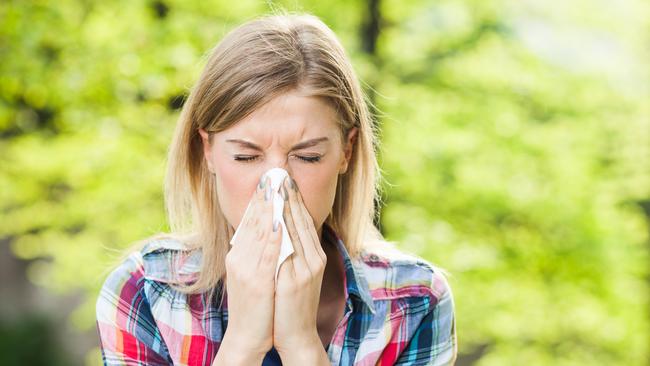South Australia is the nation’s hay fever capital, new research shows
SPRING is here, and with it comes that familiar itching sensation and runny nose. If you’ve ever thought South Australians are more prone to hay fever, you’re right — in fact, we are the nation’s hay fever capital.
SPRING is in the air — and so is pollen which triggers hay fever.
New research to be released on Thursday to mark the start of spring, shows South Australia is the nation’s hay fever capital.
And women are more likely than men to have symptoms such as sneezing, a runny nose and watery eyes caused by allergens like pollen.
The good news for some grappling with hay fever — or allergic rhinitis — is you may grow out of it.
The Medibank Better Health Index which has surveyed 1000 people nationally each week since 2007 shows 30 per cent of South Australians reported at least one hay fever episode in the 12 months from April 2015-March 2016.
This was the highest of all states and territories, although it dropped significantly from the 36 per cent recorded in the 12 months of April 2009-March 2010.

South Australian women were far more likely than men to suffer from hay fever, at 34 per cent compared to 26 per cent respectively.
Medibank spokeswoman Dr Leonie Katekar said there was no clear reason why SA carried the hay season crown.
“We know there are particular allergenic pollens at different times of the year but we are not really sure why some people have allergic reactions and others don’t,” she said.
“It is important people avoid things that trigger hay fever and treat the symptoms — some treatments are quite effective although none are perfect.
“If pollen in Spring sets you off try to limit exposure, such as avoid being outside on windy days and if you are exposed have a shower to get rid of things like pollen and pet hair.”
Dr Katekar noted pollen on windy days can collect on washing hanging on lines, and be brought inside clinging to clothes and bed linen.
She said it was unclear why many more women than men reported allergic incidences and also noted it appears less prevalent in younger and older age groups.
“It seems to grow then subside with age — 25 to 54 appears to the peak age group,” she said.
Asthma Australia publishes a daily pollen forecast on website asthmaaustralia.org.au which notes August to March is a difficult time for people with asthma and hay fever due to wind-pollinated plants, made worse by thunderstorms which burst pollen grains into even smaller particles which can be inhaled into the lungs.
TIPS TO BEATING HAY FEVER
LIMIT outdoor time on days where the pollen count is high, particularly if it’s windy or stormy weather. Asthma Australia provides daily updates on pollen levels in Adelaide. While indoors, close windows to stop pollen entering.
AVOID high allergen plants. If you find time in the garden worsens your symptoms, try replacing your plants with low allergen options.
AVOID irritants. Reduce exposure to dust and animal hair, as well as other irritants like smoke and certain sprays like air freshener.
IF exposed to allergens, shower and wash your eyes and hair.
BE prepared — if you have to enter a highly pollinated area, wear sunglasses and carry tissues.
SEE your GP to find which treatments suit your individual needs.
